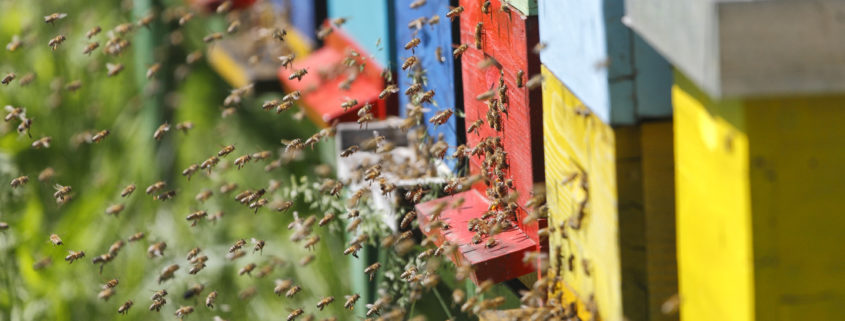How Long Can I Keep a Queen in its Cage?
When you receive a queen bee, ideally, you want to be ready to install her as quickly as possible. Queen honeybees are not meant to live in cages over the long haul.
Sometimes, however, situations can prevent you from installing a queen immediately. Perhaps it’s challenging weather, an unanticipated work issue, family matters, or some other urgent situation that can prevent you from installing a queen upon arrival.
If this is the case, it’s good to know that with the proper care and handling, a queen bee can live in a cage with attendants for a week or even more with consideration. This is not ideal, however. The longer the queen remains in a cage outside of a colony, the longer she is exposed to the dangers of being outside of a colony of bees. She also potentially begins to lose her pheromone signature, impairing acceptance.
At Wildflower Meadows, we have generally found that queens that spend an extended period in queen cages can sometimes tend not to perform as well over the long haul. This could be due to several factors, such as:
- The ability of just a few attendant bees in the cage to control the temperature and humidity is not close to that of a full beehive. Therefore, the queen bee is subject to broader and more potentially damaging temperature fluctuations when in a cage than inside a colony.
- While acceptable, the quality of the candy in the cage is nowhere near as nutritious as the natural food in a colony.
- Sometimes, the attendant bees can become stressed or die, limiting their ability to care for the queen.
- There is no water in the cage, so the bees and queen can suffer from dehydration.
- Other unknown stresses of being caged could affect the well-being of the queen and attendants in the cage.
So, what can be done to mitigate these potential problems?
First, if you can’t install your queen immediately, you want to store your queen at room temperature and in a relatively dark and calm place in your house. There should be no drafts or extended exposure to sunlight. You must also keep the queen away from household chemicals, especially pesticides.
Then, twice daily—in the morning and evening—give the cage a drop of clean water. You can apply the water to the cage with your fingertip so that some water drips in. The attendant bees will lap up the water. Don’t give any more water than this. This is not a case where more is better. Too much water can chill the bees or melt the candy, creating a mess and possibly stressing or even damaging the queen bee.
Keep an eye on the attendants. If more than one or two die, you may need to remove them and add new attendants to the cage. This is a tricky proposition and one you should avoid.
If you need to store the queens for more than a few days, the ideal way to hold queens is to establish a queen bank inside a strong, healthy colony. This is the tried-and-true way of storing and maintaining queens.
Again, your objective should always be to install and introduce a queen as soon as possible. The colony is her home, and laying eggs in a healthy colony is her calling and way of life!












